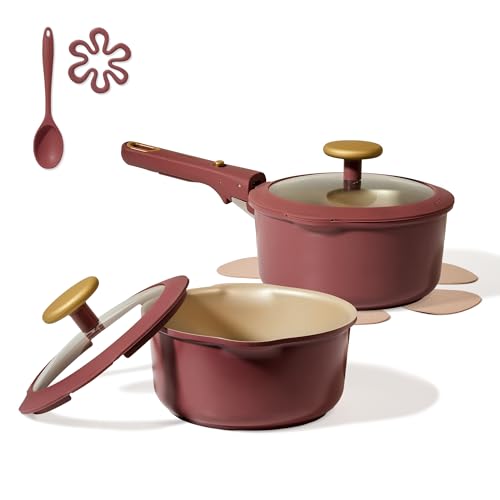We’ve discovered one of nature’s most soothing and aromatic beverages that’s been cherished for centuries. Sage tea offers a perfect blend of earthy flavors and incredible health benefits that’ll transform your daily tea routine. This fragrant herb has been used in traditional medicine for generations and continues to captivate tea enthusiasts worldwide.
The beauty of sage tea lies in its simplicity and versatility. We love how this golden-hued brew delivers a warm, slightly bitter taste with hints of pine and citrus that creates an incredibly calming experience. Whether you’re seeking digestive support, throat relief, or simply want to unwind after a long day, sage tea provides the perfect solution.
Our foolproof sage tea recipe uses just a few simple ingredients and takes less than 10 minutes to prepare. We’ll show you exactly how to brew the perfect cup that captures all of sage’s natural goodness and delivers maximum flavor in every sip.
Ingredients
We keep our sage tea recipe simple and pure to showcase the herb’s natural qualities. The beauty of this traditional beverage lies in its minimalist approach that requires just a few essential components.
For one cup of sage tea:
- 1 tablespoon fresh sage leaves (or 1 teaspoon dried sage)
- 1 cup filtered water
- 1 teaspoon honey (optional, for sweetness)
- 1 slice fresh lemon (optional, for brightness)
- 1 cinnamon stick (optional, for warmth)
Fresh vs. Dried Sage:
We recommend using fresh sage leaves when available as they provide a more vibrant flavor and aroma. Fresh leaves should appear bright green without any dark spots or wilting edges. Dried sage works wonderfully too and offers a more concentrated flavor profile that many tea enthusiasts prefer.
Quality Considerations:
Our ingredient selection focuses on purity and potency. We source organic sage whenever possible to avoid pesticide residues. The water quality significantly impacts the final taste, so we always use filtered or spring water rather than tap water. Room temperature ingredients blend more harmoniously during the steeping process.
Optional Flavor Enhancers:
We often customize our sage tea with complementary ingredients. Raw honey adds natural sweetness while supporting the throat-soothing properties. Fresh lemon juice brightens the earthy notes and provides vitamin C. A cinnamon stick introduces warming spices that pair beautifully with sage’s herbal character.
Equipment Needed

Making sage tea requires minimal equipment that most home cooks already have in their kitchen. We’ve compiled a comprehensive list of essential tools to help you brew the perfect cup.
Essential Equipment:
- Kettle or saucepan for boiling water
- Teapot, heatproof container, or mug for steeping
- Fine mesh sieve or strainer to remove leaves after steeping
- Spoon for stirring or bruising leaves (optional)
The kettle serves as our primary water heating tool, though any saucepan will work effectively. We recommend using a dedicated teapot for optimal steeping, but a simple heatproof mug works just as well for single servings.
A fine mesh sieve becomes crucial for removing all sage leaves from the finished tea. This tool ensures a smooth drinking experience without any unwanted plant material. The strainer should have small enough holes to catch even the smallest leaf particles.
We suggest keeping a spoon handy for gently bruising fresh sage leaves before steeping. This technique releases the essential oils and enhances the tea’s flavor profile. The spoon also helps with stirring in any optional sweeteners or flavor enhancers.
Most households already possess these basic tools, making sage tea preparation accessible to everyone. The simplicity of required equipment reflects the straightforward nature of this traditional herbal beverage.
Instructions

Creating the perfect cup of sage tea requires just four simple steps that we’ll walk you through below. Our method ensures maximum flavor extraction while preventing bitterness.
Prep the Sage Leaves
We start by carefully removing sage leaves from their stems if using fresh sage. Rinse the leaves under cold water to clean them thoroughly and remove any dirt or debris. For fresh sage leaves we recommend gently bruising them with the back of a spoon to release their essential oils and enhance the tea’s flavor profile. If using dried sage leaves simply measure out the appropriate amount and set aside.
Boil the Water
We bring 2 cups of filtered water to a rolling boil in our kettle or saucepan. Quality water makes a important difference in the final taste so we always use filtered or spring water when possible. Once the water reaches a full boil we remove it from heat and let it cool for about 30 seconds before proceeding to the next step.
Steep the Tea
We place our prepared sage leaves into a teapot or heatproof container and pour the hot water over them. The steeping time ranges from 5 to 10 minutes depending on how strong we want our tea to be. We avoid boiling the sage leaves directly as this can create a bitter taste that overpowers the herb’s natural earthiness. During steeping we can add fresh lemon juice and honey to enhance the flavor if desired.
| Steeping Time | Flavor Profile |
|---|---|
| 5 minutes | Mild and delicate |
| 7 minutes | Balanced and aromatic |
| 10 minutes | Strong and robust |
Strain and Serve
We strain the tea through a fine mesh sieve to remove all sage leaves and any lemon zest if we added it during steeping. Our sage tea can be served immediately while hot or allowed to cool for serving over ice. We can sweeten with honey or natural sweeteners according to our taste preferences and enjoy this nourishing herbal beverage.
Variations

We love experimenting with different approaches to sage tea brewing to discover new flavors and experiences. Each variation offers unique benefits and taste profiles that can transform your tea ritual.
Fresh Sage vs. Dried Sage
Fresh sage delivers a sweeter and more vibrant flavor profile that we find particularly appealing. We recommend using about 1 sprig with 6-8 leaves for optimal taste extraction. The leaves offer delicate aromatics that create a more nuanced drinking experience.
Dried sage requires a slightly different approach but produces equally satisfying results. We use 5-6 dried leaves per cup and benefit from simmering them in water for 3-4 minutes to properly rehydrate and release their concentrated flavors. This method helps unlock the preserved essences within the dehydrated leaves.
While fresh sage generally provides superior flavor quality, dried sage offers convenience and consistent availability year-round. We keep both options in our kitchen to accommodate different brewing preferences and seasonal availability.
Adding Honey or Lemon
Honey transforms sage tea by improving its natural sweetness while complementing the herb’s earthy undertones. We add honey after steeping to preserve its nutritional qualities and prevent heat damage to beneficial enzymes. The golden sweetness creates a perfect balance against sage’s sometimes bitter notes.
Lemon juice or fresh lemon zest introduces a bright, slightly tart element that cuts through sage’s earthiness beautifully. We find that lemon’s acidity balances the herb’s natural bitterness while adding refreshing citrus notes. The combination creates a more complex flavor profile that appeals to various taste preferences.
Many of our favorite recipes combine both honey and lemon for a soothing, well-rounded beverage. This pairing delivers sweetness, tartness, and herbal depth in every sip.
Iced Sage Tea
Our iced sage tea variation offers a refreshing twist on the traditional hot beverage. We brew the tea using fresh sage leaves following our standard steeping method, then allow it to cool completely before straining.
Fresh raspberries and honey create an exceptional fruity enhancement that we particularly enjoy during warmer months. The berries add natural sweetness and vibrant color while honey provides additional depth. We muddle the raspberries gently to release their juices before combining with the cooled tea.
Serving this mixture over ice creates a vibrant cold beverage that maintains all of sage’s beneficial properties while offering refreshing summer appeal. The combination delivers both visual appeal and complex flavors that make it perfect for entertaining or personal enjoyment.
Storage Tips

Proper storage ensures your sage tea maintains its optimal flavor and freshness for future brewing sessions. We’ve compiled essential storage guidelines for both fresh and dried sage leaves as well as prepared tea.
Fresh Sage Storage
Fresh sage leaves require careful handling to preserve their vibrant flavor and aroma. We recommend wrapping the leaves in a damp paper towel before placing them inside a plastic bag or airtight container. Store this package in your refrigerator where the leaves will stay fresh for 5 to 7 days. This method maintains the moisture level needed to prevent wilting while protecting the delicate oils that give sage its distinctive taste.
Dried Sage Storage
Dried sage offers extended shelf life when stored correctly. Keep your dried sage in an airtight container away from moisture and direct sunlight. Choose a cool dark location such as a pantry or spice cabinet for optimal preservation. Properly stored dried sage maintains its potency for up to one year making it a convenient option for regular tea preparation.
Prepared Tea Storage
Brewed sage tea requires refrigeration once it cools to room temperature. Pour the cooled tea into an airtight container and store it in your refrigerator for 2 to 3 days maximum. Beyond this timeframe the tea may develop off flavors or spoil.
For longer storage options we suggest freezing cooled sage tea in ice cube trays. Once frozen transfer the cubes to freezer bags for convenient single serving portions. These frozen cubes work perfectly for quick iced tea preparation or adding to smoothies.
Important Storage Notes
| Storage Method | Duration | Best Practices |
|---|---|---|
| Fresh sage (refrigerated) | 5-7 days | Wrap in damp paper towel |
| Dried sage (pantry) | Up to 1 year | Airtight container in cool dark place |
| Prepared tea (refrigerated) | 2-3 days | Airtight container |
| Frozen tea cubes | 2-3 months | Freezer bags after initial freezing |
Ground sage from grocery store spice sections does not work well for tea preparation and should be avoided. The texture and processing methods used for culinary ground sage create a different flavor profile that may result in bitter or unpleasant tea.
Health Benefits of Sage Tea

Beyond its delightful flavor and aromatic qualities, sage tea offers many health benefits that make it a valuable addition to our daily wellness routine. Research reveals that this herbal beverage contains powerful compounds that support various aspects of our health.
We find sage tea particularly rich in antioxidants such as rosmarinic acid and ursolic acid, which help reduce inflammation and oxidative stress throughout our body. These compounds work together to protect our cells from damage caused by free radicals.
Our cardiovascular system benefits significantly from regular sage tea consumption. Research indicates that sage tea may improve lipid profiles by lowering LDL (bad) cholesterol and total cholesterol while increasing HDL (good) cholesterol, which supports overall heart health.
Brain and cognitive function receive remarkable support from sage tea’s unique properties. Studies suggest that this herbal beverage may enhance memory and concentration while potentially protecting against cognitive disorders like Alzheimer’s disease.
Women experiencing menopause symptoms often find relief through sage tea consumption. This herbal remedy helps reduce hot flashes, excessive sweating, and mood swings associated with hormonal changes during this life stage.
Digestive health improves when we incorporate sage tea into our routine. The herb’s natural compounds can alleviate indigestion, bloating, and gas, making it an excellent post-meal beverage.
Oral health benefits emerge from sage tea’s antimicrobial properties. These qualities help combat bad breath, cold sores, and contribute to improved overall oral hygiene when used as part of our daily health regimen.
Our skin receives nourishment from sage tea’s antioxidant content, which contributes to skin health and may help reduce blemishes. The anti-inflammatory properties work from within to support a clearer complexion.
Stress reduction becomes more manageable with sage tea’s calming properties. This herbal beverage helps ease anxiety, nervousness, and tension, making it perfect for our evening relaxation routine.
Blood sugar regulation represents another important benefit of sage tea consumption. Research suggests it may help decrease blood sugar levels, potentially lowering the risk of type 2 diabetes development.
Liver support emerges from animal studies that suggest sage tea may improve antioxidant status in the liver, which proves particularly beneficial for diabetes management.
| Health Benefit | Key Compounds | Primary Effect |
|---|---|---|
| Antioxidant Protection | Rosmarinic acid, Ursolic acid | Reduces inflammation and oxidative stress |
| Heart Health | Multiple compounds | Improves cholesterol profiles |
| Cognitive Support | Various bioactive compounds | Enhances memory and concentration |
| Menopause Relief | Phytoestrogens | Reduces hot flashes and mood swings |
| Digestive Aid | Natural digestive compounds | Alleviates bloating and gas |
| Oral Health | Antimicrobial compounds | Fights bad breath and oral bacteria |
We should note that the antioxidative potential of sage tea may vary by brand, and while evidence remains promising, more research is needed to fully confirm these health benefits. Excessive consumption may disrupt hormone balances, so moderation is advised when incorporating sage tea into our wellness routine.
Troubleshooting Common Issues

Even experienced tea brewers encounter challenges when crafting the perfect cup of sage tea. We’ve identified the most common problems and their answers to help you achieve consistently delicious results.
Tea Too Bitter
Bitterness in sage tea typically stems from over-steeping or using excessive amounts of leaves. We recommend reducing your steeping time to 3-5 minutes for a milder flavor profile that still captures sage’s beneficial compounds.
| Issue | Cause | Solution |
|---|---|---|
| Overly bitter taste | Over-steeping beyond 10 minutes | Limit steeping time to 3-5 minutes for lighter flavor |
| Harsh aftertaste | Using too many sage leaves | Reduce to 1 teaspoon dried or 1 tablespoon fresh leaves per cup |
| Astringent quality | Boiling sage leaves directly | Pour boiling water over leaves and steep off heat |
Another common mistake involves boiling sage leaves directly for extended periods. We suggest removing your water from heat before adding sage leaves to prevent extracting harsh tannins that create unpleasant bitterness.
Adding honey or lemon juice can help balance any residual bitter notes while improving the overall flavor complexity of your sage tea.
Tea Too Weak
Weak sage tea often results from insufficient steeping time or using too few leaves relative to water volume. We find that increasing steeping time to 7-10 minutes allows for proper extraction of sage’s aromatic compounds and therapeutic properties.
| Issue | Cause | Solution |
|---|---|---|
| Bland flavor | Under-steeping below 3 minutes | Increase steeping time to 7-10 minutes |
| Lack of sage aroma | Using too few leaves | Use full tablespoon of fresh or teaspoon of dried sage |
| Watery consistency | Water not hot enough | Ensure water reaches full boiling point before steeping |
Water temperature plays a crucial role in proper extraction. We always ensure our water reaches a full rolling boil before removing it from heat and adding sage leaves.
Using more sage leaves can intensify flavor without creating bitterness when combined with appropriate steeping times. Fresh sage leaves generally require slightly longer steeping periods than dried varieties to achieve optimal strength.
Conclusion
We’ve shown you how simple it is to create a delicious cup of sage tea that delivers both incredible flavor and impressive health benefits. With just a few basic ingredients and minimal equipment you can brew this aromatic beverage in under 10 minutes.
Whether you prefer fresh sage for its vibrant taste or dried sage for convenience our recipe gives you the flexibility to customize your perfect cup. The optional additions of honey lemon and cinnamon allow you to tailor the flavor profile to your personal preferences.
Remember to follow our brewing guidelines to avoid common pitfalls like bitterness or weak flavor. Store your ingredients properly and you’ll always have everything you need to enjoy this soothing herbal tea whenever you want a moment of calm and wellness.
Frequently Asked Questions
What is sage tea and what does it taste like?
Sage tea is an aromatic herbal beverage made from sage leaves that has been valued for centuries for its health benefits and earthy flavors. It offers a distinctive, slightly bitter taste with herbaceous notes. The flavor can be described as earthy and soothing, with fresh sage providing a more vibrant, sweeter taste compared to dried sage which offers a more concentrated flavor.
What ingredients do I need to make sage tea?
You only need a few simple ingredients to make sage tea: fresh or dried sage leaves, filtered water, and optional flavor enhancers. Fresh sage is recommended for vibrant flavor, while dried sage offers convenience. Optional additions include honey for sweetness, lemon for brightness, and cinnamon for warmth. Always use organic sage and quality water for the best results.
How do I brew the perfect cup of sage tea?
Brewing sage tea requires minimal equipment: a kettle, teapot or heatproof container, fine mesh strainer, and spoon. Use 1-2 teaspoons of fresh sage or 1 teaspoon of dried sage per cup. Pour boiling water over the leaves and steep for 3-5 minutes to prevent bitterness. Strain and add optional honey or lemon to taste.
What are the health benefits of drinking sage tea?
Sage tea is rich in antioxidants like rosmarinic acid and ursolic acid, which help reduce inflammation and oxidative stress. Regular consumption may improve cardiovascular health, enhance cognitive function, relieve menopause symptoms, and support digestive health. It also has antimicrobial properties that support oral health and calming effects that aid stress reduction.
How should I store sage leaves and prepared tea?
Fresh sage should be wrapped in a damp paper towel and refrigerated for 5-7 days. Dried sage can last up to a year in an airtight container in a cool, dark place. Prepared sage tea should be refrigerated in an airtight container for 2-3 days, or frozen in ice cube trays for longer storage.
Why does my sage tea taste bitter and how can I fix it?
Bitter sage tea usually results from over-steeping or using too many leaves. Reduce steeping time to 3-5 minutes and limit sage quantity to 1-2 teaspoons of fresh or 1 teaspoon of dried sage per cup. Avoid boiling sage leaves directly; instead, pour boiling water over them. Never use ground sage from spice sections as it creates bitter flavors.
Can I make iced sage tea?
Yes! Brew sage tea using the standard method, then let it cool completely. For a refreshing variation, combine cooled sage tea with fresh raspberries and honey. This creates a delightful summer beverage that maintains all the health benefits of hot sage tea while offering a refreshing twist perfect for warm weather.














